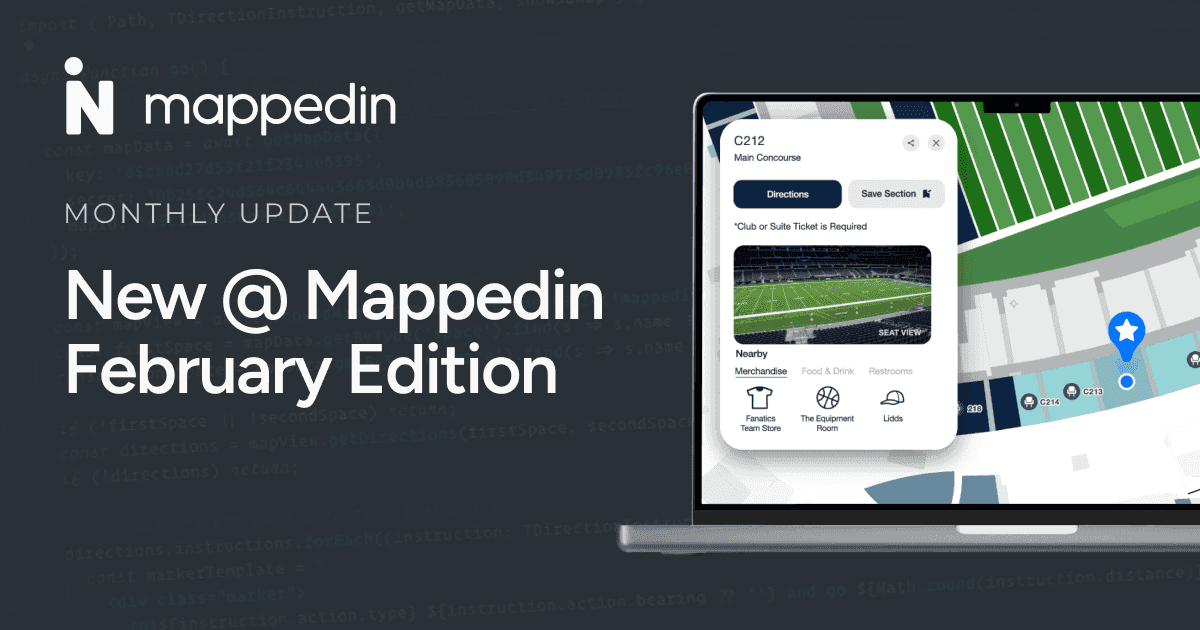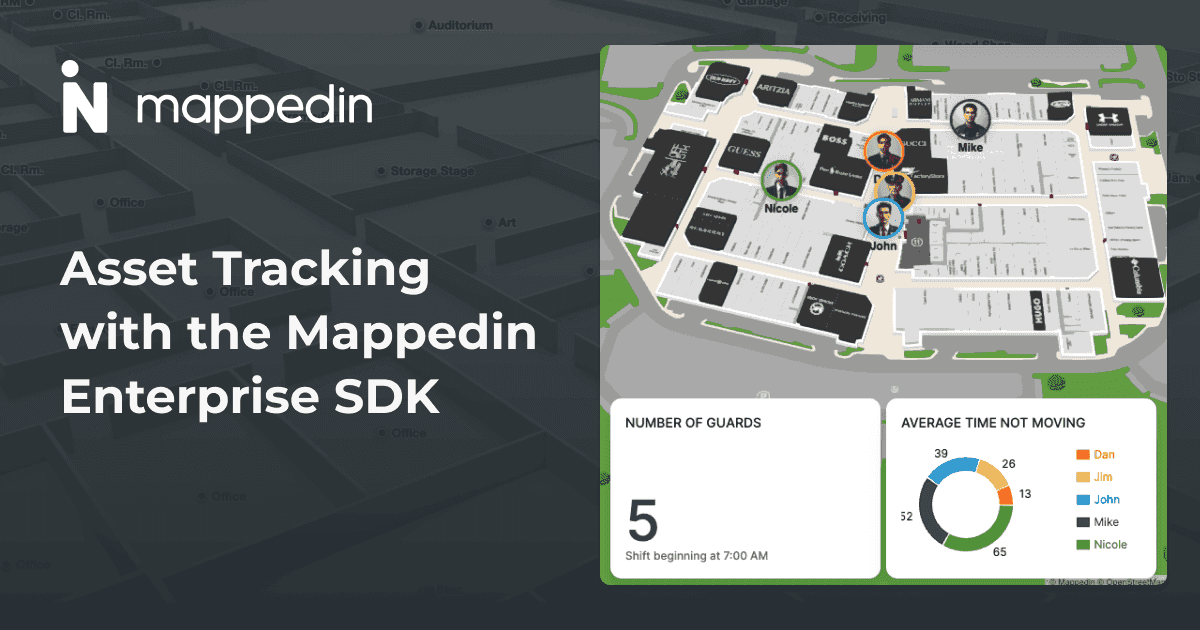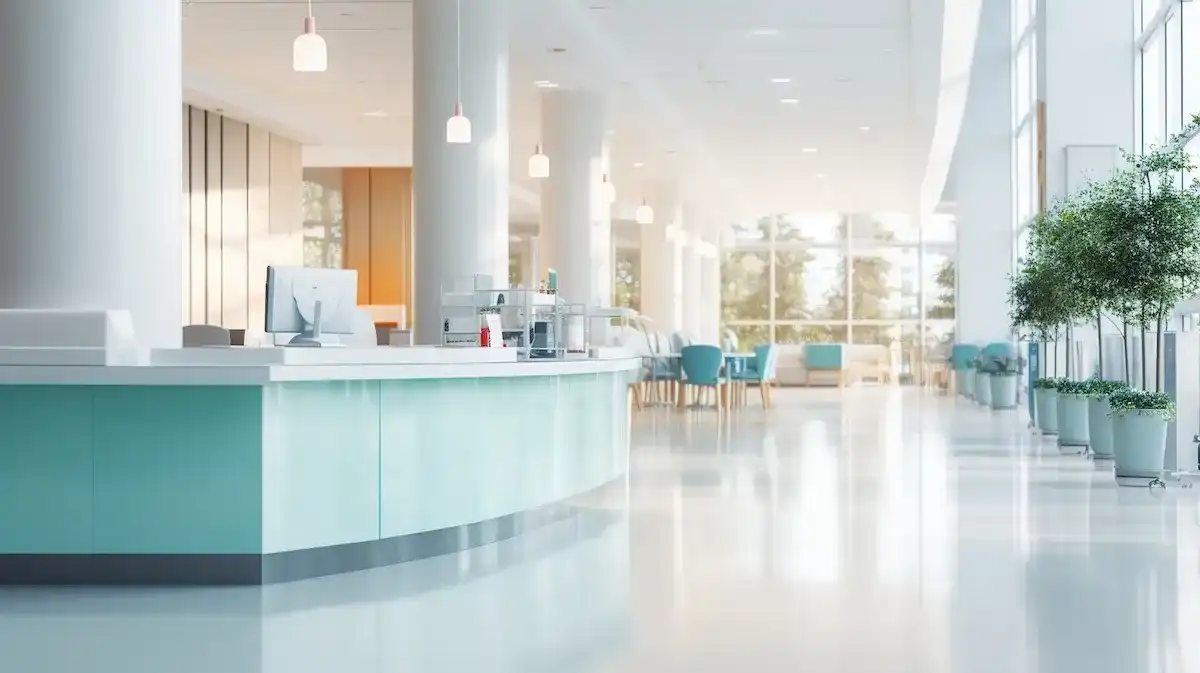What is indoor map intelligence?
Indoor map intelligence systems combine location data with algorithms, and machine learning with digital mapping to aid in visualizing and understanding the movement of people and assets within spaces. Since the challenges of operating indoor environments are ever-increasing, indoor map intelligence systems are important to consider for efficiency and safety. These systems support real-time analysis, operational planning, and enhanced decision-making to determine the interactions and relationships between people and things within indoor environments.
The more business stakeholders understand about processes within spaces, the better they can target improvements for greater speed and effectiveness. With a full view and operational understanding of their locations, organizations can make data-informed adaptive changes both responsively and proactively. In combination with mobile apps and devices, tracking tags, and other types of equipment, indoor map intelligence solutions provide greater accuracy with enhanced visualization of location data.
The integration of map intelligence within positioning, tracking, and navigational solutions is key to unlocking the full value of indoor location data that can transform businesses.

Why is indoor intelligence important for businesses?
Indoor intelligence helps manage the flow and activity of objects and people. For example, by tracking assets, businesses understand when, where, and how many objects move through their buildings and worksites at any given time, any patterns that arise from those movements, and any trends during certain times of the day.
For example, when combined with other technologies, indoor intelligence can help businesses track the volume and locations of visitors and assets, how long and where people and things typically are in the workplace, and more. For operations management, this information about how people interact with the assets and locations within their buildings aids them with targeted decision-making to enhance the visitor experience while they improve maintenance and processes for locations.
Opportunities for practical application
The practical application of an all-in-one indoor intelligence platform across numerous use cases delivers massive advantages for the operation and management of physical spaces. For example, solutions for retail marketers can increase shopper footfall within malls and stores with point-to-point wayfinding to desired brands and merchandise while analyzing top map searches, shopper volumes, and dwell times. They can also automatically notify shoppers about relevant special offers based on their location. This type of location-based marketing strategy encourages store visits, purchases, and increases customer loyalty.
For facility management, indoor map intelligence provides continuous insights into occupant behavior and movement, identifies high-traffic areas, allows for tracking visit duration, and more. Simultaneously, facility and unit maintenance work orders can be facilitated and tracked with asset and equipment wayfinding, images, links, and descriptions associated with locations on maps. The mapping data and resulting insights are invaluable for making informed decisions to enhance the performance of malls, stores, stadiums, warehouses, workplaces, and all types of venues.
Indoor maps optimized for incident response and safety
The more deeply integrated the indoor map intelligence is for a space, the more prepared owners, management, employees, and visitors are to prevent and respond to hazardous and emergency incidents. Data-informed enhancements can optimize safety and security planning protocols, facilitate more accurate responses to security and safety incidents, and also enable advanced location-based features for dynamic rerouting, geofencing, and location-based access control.
Understanding asset data
The tracking and visualization of assets like inventory, delivery pallets, individual cartons, building materials, and equipment is crucial across use cases for effective processes, workplace safety, and loss control. Owners and operations teams can track assets in real-time, increasing efficiencies and reducing errors across the entire space, such as a warehouse, hospital, or airport. The collection, visualization, and analysis of this data is an essential part of any indoor map intelligence system and provides a comprehensive understanding of an indoor environment and surfaces potential areas of improvement.
Wayfinding is a central component to applications
Indoor wayfinding is a core capability for large indoor environments like malls, airports, and warehouses. People entering complex spaces may have little or no familiarity with them, which can cause anxiety and friction. With the presence of indoor wayfinding solutions, the visitor experience and worker efficiency is enhanced by fostering speed and ease in getting where they need to go and orienting themselves based on what is around them. Read on for more use cases to consider.
Indoor map intelligence use cases
Indoor wayfinding is a core capability for large indoor environments like malls and airports. Most people entering those spaces as visitors have little or no familiarity with those spaces, which can cause anxiety and friction. With the presence of indoor wayfinding solutions, the visitor experience is enhanced by fostering ease and visitors being able to orient themselves based on what is around them. Below are some other, more specific use cases to consider.
Desk and room booking
Indoor map intelligence for workplaces helps employees and visitors navigate offices and helps with logistics for booking meeting rooms and desks. Workplace apps are an interactive and user-friendly way to present indoor wayfinding solutions to employees. Mapping and positioning apps for office spaces provide walking directions and navigation that improve the room booking process. If desk assignments are more free-form, it makes it easy for everyone to find who they’re looking for based on desk booking information in the workplace app.
Health, safety, and security
Health, safety, and security teams are ubiquitous. Indoor map intelligence, specifically indoor positioning, accurately tracks the current locations of people and objects in real time. This advanced technology, typically involving devices for tracking such as cameras, RFID tags and readers, beacons, etc., is powerful for monitoring and security, especially in areas where unauthorized access must be prevented. Indoor positioning combined with location intelligence can also help with asset tracking and management, making it easier to detect suspicious activity and guide emergency response and evacuations if needed.
Asset tracking
Technologies like RFID, barcodes, GPS, and IoT devices help manage and monitor goods and equipment in real-time. Robust applications for tracking in complex asset-dependent locations such as hospitals and warehouses integrate indoor map intelligence to enhance data with detailed, real-time maps of the building layouts, allowing for visualization and analysis of asset locations. This improves storage optimization, streamlines retrieval processes, reduces search times, and enhances security by preventing misplacement and theft. The combination of asset tracking with indoor map intelligence boosts operational efficiency, inventory accuracy, and cost management.
Geofencing and proximity messages
Proximity-based messaging can be used for location-based marketing and operations to deliver personalized messages using someone’s real-time location relative to places and things. This type of location data considers qualifiers such as proximity to a store, events in the area, and more. Integrated geo-fences allow proximity ranges to be dynamic so that messages are only sent when someone is within a specific distance or defined zone.
Let’s use a stadium as an example. The stadium could target mobile app users through proximity-based messaging (such as a discount or special offer) and encourage them to purchase from nearby concession stands and apparel shops. Combined with indoor maps, navigation to vendors and other locations can enhance the fan experience and increase traffic and revenue.
Facility management
With operations and facility management, indoor map intelligence can streamline processes for a wide variety of use cases such as facility navigation, work and maintenance ordering, systems monitoring, asset tracking, etc. Data-driven understanding of location and status of operational activity simplifies time-consuming tasks and frees up more time for managers to focus on other essential duties. For example, within a building systems application, an advanced indoor map intelligence can be connected to lighting and HVAC systems to turn on or off systems automatically based on data for room usage, contributing to energy efficiency and cost savings.
Space planning
Due to back to work initiatives, company growth, and other changes, businesses may need to make physical changes to the workplace to accommodate changes. Data gathered through indoor map intelligence can be useful in designing new workspaces based on the habits of current employees–perhaps reducing personal offices and increasing the number of meeting rooms and shared desks. Even if there’s no increase in headcount, indoor map intelligence may reveal a better way to optimize the workplace layout.

Key takeaways
- Indoor map intelligence enables marketing, operations, building management, employees, and visitors to be more efficient and knowledgeable about indoor environments. An all-in-one location intelligence platform enables numerous practical applications across diverse use cases and vertical markets.
- Be analytical. Indoor map intelligence is crucial for making data-driven decisions that improve business and enhance the visitor/occupant/employee experience, as well as prepare for and respond to health, safety, and security risks.
A note on indoor positioning and indoor mapping
Indoor positioning and indoor mapping are different yet complementary. Indoor positioning accurately locates people, locations, and assets within defined spaces while indoor mapping is more focused on visualization and navigation within a space overall. They work together because in order to understand where things are on maps, the map has to exist in the first place. Indoor positioning lacks valuable location-based context without an indoor map.
Some indoor positioning technologies include:
- Beacons
- Geomagnetic technology
- Radio-Frequency Identification (RFID)
- Wi-Fi
Get in touch with our indoor mapping experts to discuss your indoor map intelligence needs.
Tagged In
Share


